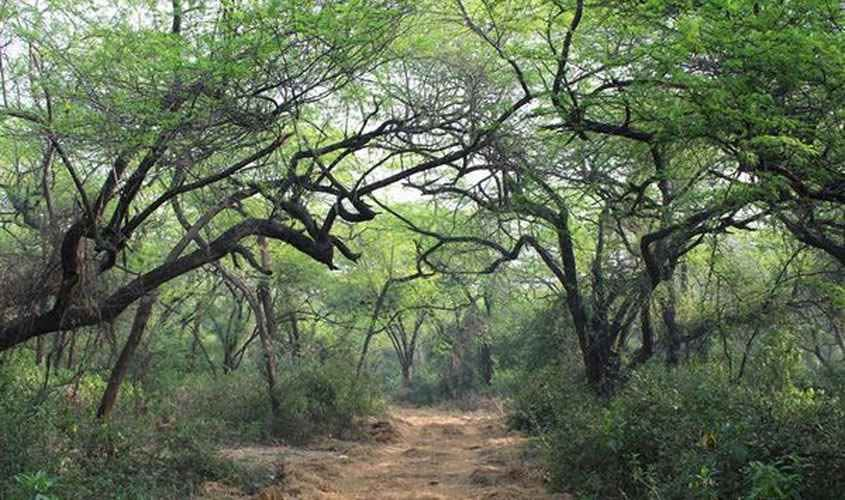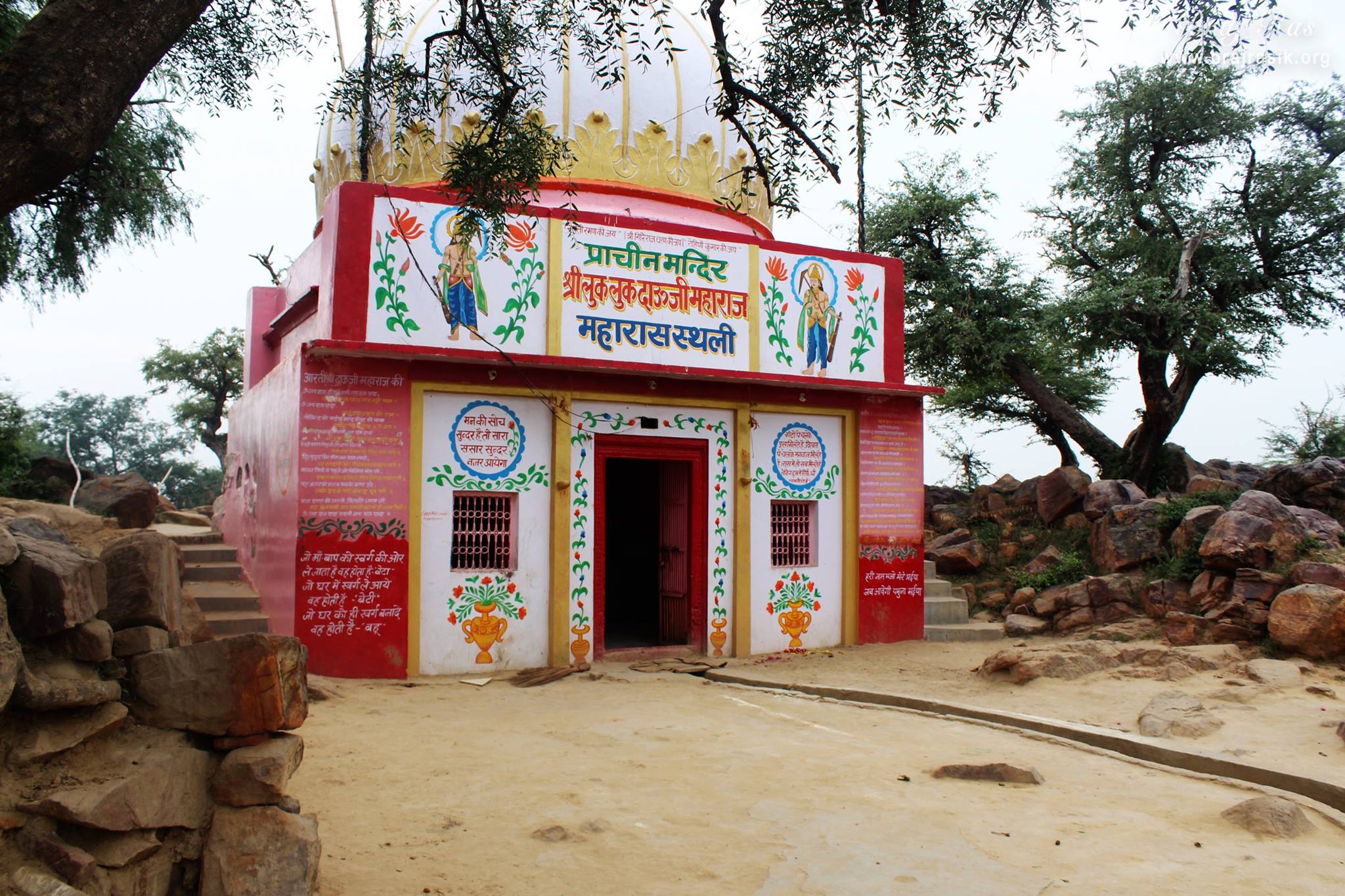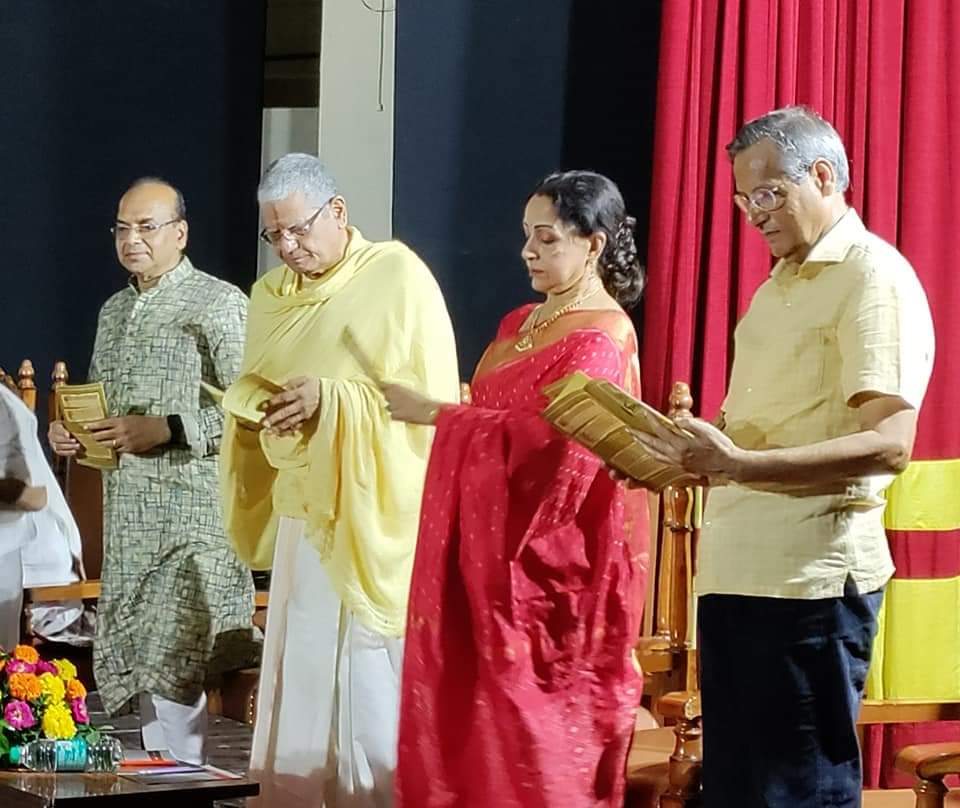The PWD has allotted a sum of Rs.38.47 lakh to the forest department to speed up work on the project. 100 trees will be cut on an urgent basis for the upcoming Mudiya Puno festival on 13 July.
Mathura, 2022-07-06 (Vrindavan Today News): After a lag of nearly six years, the Mathura-Govardhan-Deeg four-lane road project commenced earlier this week with the felling of 20 trees. The project will claim more than a thousand trees – 1803 to be precise – in the district, out of which 100 will be cut on an urgent basis for the upcoming Mudiya Puno festival on the 13th of July. The PWD has allotted a sum of Rs.38.47 lakh to the forest department to speed up work.
The 26.8km-long Mathura-Govardhan-Deeg four-lane Road was approved in 2016, however the lack of permission to cut trees kept it on hold until last December when the Supreme Court sanctioned the removal of 1803 trees for the same. During this time the worth of the project more than doubled from 138cr in 2016 to 294cr.

Earlier this week a team of the forest department, Etawah began the task with cutting 20 trees that were identified among the 100 most problematic ones hampering preparation for the Mudiya Mela to be organized on 13 July. Rest of the 1703 trees will be felled in batches.
Rampant Loss of Green Cover in City
Hundreds of old trees of great ecological and heritage value have already been cut for various road widening and sewage laying activities in the twin cities. The destruction was most rampant during the years 2009 and 2010 along Mathura – Vrindavan road, Chhatikara-Vrindavan Road, and Parikrama Marg when an injunction against the cutting of trees was successfully sought from the Allahabad HC.
Starting 2015, yet again, thousands of trees were felled in the district for several road widening projects.
Most recently permission was granted for cutting 318 trees for the 7.5km-long Mathura-Vrindavan four lane highway. The six-lane Delhi-Agra National Highway has further claimed many fully-grown trees, 255 of which perished due to lack of freshwater even after being transplanted.
While the forest department and other concerned authorities claim to compensate for the loss of city greens by planting more trees in the surrounding villages like farah, Tehra, Baldeo etc. the fact is that both their transplantation and fresh plantation drives are failing. Ghaziabad-based Rohit Nursery which was contracted for transplanting 255 trees from Mathura-Vrindavan to the jungles of Farah and Tehra to clear the way for the six-lane Delhi-Agra national highway failed to deliver on the contract as per which it was supposed to irrigate the trees with freshwater for 18 months.
In the case of Mathura-Govardhan-Deeg Highway, tall promises of ten times tree plantation have been made. However Geo tagging used to track the growth of trees planted in the last three years showed that nearly 20% of them died due to lack of care. According to the forest department close to 10-15% of them died in the sapling stage itself. 4-5% loss happened regardless of consistent efforts to replace the dead saplings.
In this way, salt water and the negligence of civic authorities and private agencies is destroying the forest wealth of Braj in the outskirts, while the city gets denuded and suffers irreparable damage to its soil quality owing to the destruction of replenishing ecosystems.
How Much is Enough?
Planting new trees cannot compensate for the benefits of fully grown ecosystems, and Braj is on its way to becoming a ‘sorry example’ of this uncomfortable truth that everyone seems to have turned a blind eye to. It is a fact that the majority of these projects were/are not a local requirement.
Mudiya Mela/Puno, Vrindavan, Govardhan Parikramas are ages-old traditions that have continued uninterrupted ever since there were no proper roads, let alone four and six-lane highways that are being justified in the name of devotees’ convenience and promoting “religious tourism” today.
While relieving the burden of traffic on the Mathura-Vrindavan road which is the only approach road from Mathura to Vrindavan does seem like a valid defence, the argument is also somewhat superfluous in the face of the recently approved Light Rail project which will connect the twin towns via a two-lane highway, and light metro rail along the 13-km-long rail line.
Clearly the architects of smart cities Mathura-Vrindavan have not been able to realise that their idea of religious tourism is killing the spirit of the pilgrimage/temple towns that Mathura-Vrindavan are. What does it even mean to have Vrindavan devoid of Vanas, Mathura devoid of Yamuna? The economics of the city, whether through tourism or any other means, must be planned around its natural and environmental heritage, lest such development change the entire character of the place.





